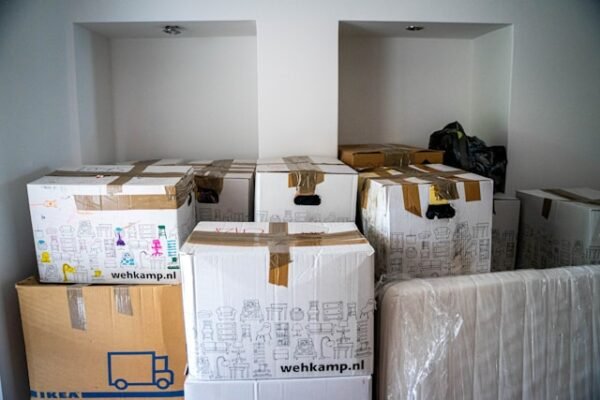Ready to break the monotony and host an epic virtual game night with your friends? Trust me, it’s easier than you think and a ton of fun. Whether you’re a tech wizard or someone who’s still figuring out how to mute yourself on Zoom, I’ve got you covered. Let’s dive into the nitty-gritty of planning and executing a virtual game night that your friends will rave about for weeks!
Why Host a Virtual Game Night?
First off, why even bother with a virtual game night? Well, it’s the perfect way to stay connected with friends who are scattered all over the globe. Plus, it’s an awesome way to unwind, laugh, and maybe even indulge in some friendly competition. You don’t have to worry about travel, dress codes, or cleaning up your place. Just log in and let the good times roll.
Choosing the Right Platform
Before you start sending out invites, you need to choose a platform for your game night. Here are a few popular options:
- Zoom – Zoom is a fan favorite because of its reliability and ease of use. You can host up to 100 people for 40 minutes on the free plan. If your game night is likely to go longer (and it will), consider upgrading to a paid plan.
- Google Meet -Another solid option, especially if you’re already familiar with Google’s suite of tools. Google Meet offers a smooth experience and integrates well with Google Calendar for easy scheduling.
- Discord – For the tech-savvy crowd, Discord offers robust features and the ability to create different channels for different games or breakout groups.
Setting Up the Game Night
Now that you’ve chosen your platform, it’s time to set the stage. Here’s how to get everything ready:
Send Out Invites
Create an invite that sets the tone for the night. Use tools like Canva to design something fun and exciting. Make sure to include the date, time, platform details, and any other important info. Send it out via email, group chats, or even on social media.
Choose Your Games
Here’s where the real fun begins. Mix it up with a variety of games to keep everyone engaged. Here are some fantastic options:
- Trivia Games: Websites like Kahoot and QuizUp offer customizable trivia games. You can create your own questions or use pre-made ones.
- Online Casino Games: Spice things up with online casino games like poker, blackjack, or roulette. Websites like levelupcasino.com offer a fun place where you and your friends can gamble (responsibly, of course!) and have a blast.
- Board Games: Websites like Tabletopia and Board Game Arena allow you to play classic board games like Catan, Carcassonne, and more.
- Party Games: Games like Jackbox Party Packs are perfect for large groups. They offer a variety of mini-games that are hilarious and easy to play.
Game Night Essentials
To make your virtual game night unforgettable, there are a few essentials you’ll need to consider:
Snacks and Drinks
Encourage everyone to have their favorite snacks and drinks on hand. Maybe even create a fun cocktail recipe that everyone can try. This adds a communal feel to the night and keeps everyone energized.
Dress Code
Yes, you heard that right! Set a fun dress code to add an extra layer of excitement. It could be as simple as wearing your favorite hat, or as elaborate as a themed costume night. Imagine everyone showing up in their best 80s outfit or pajama party gear!
Kicking Off the Night
It’s game time! Here’s how to get the party started and keep it running smoothly:
Break the Ice
Start with a quick icebreaker to get everyone comfortable. A simple round of introductions with a fun fact or a silly question can do wonders. For example, ask everyone to share their favorite quarantine hobby or the weirdest thing they’ve eaten recently.
Rotate Games
Keep things dynamic by rotating games every 30-45 minutes. This prevents boredom and keeps the energy high. You can use a randomizer tool to pick the next game or let the group vote.
Encourage Interaction
Make sure everyone feels included. If someone seems a bit shy, gently bring them into the conversation. Compliment their gameplay or ask for their opinion on the next game choice. Remember, the goal is to have fun and connect.
Troubleshooting Tech Issues
Let’s face it, tech issues are inevitable. But don’t worry, we’ve got some tips to handle them like a pro:
Test Your Equipment
Before the game night, test your microphone, camera, and internet connection. Ask a friend to hop on a quick call to make sure everything works smoothly.
Have a Backup Plan
If the platform you’re using crashes or experiences issues, have a backup plan. Know how to quickly switch to another platform like Google Meet or Skype.
Stay Calm
If something goes wrong, stay calm and patient. Tech issues can be frustrating, but a positive attitude goes a long way. Plus, it’s a great opportunity for some spontaneous laughter and bonding.
Wrapping Up the Night
As the night comes to an end, make sure to end on a high note:
Highlight the Fun Moments
Recap the funniest, most exciting moments of the night. Share screenshots or memorable quotes from the games.
Plan the Next One
Why not make this a regular thing? Suggest a tentative date for the next virtual game night and get everyone’s input on games they’d like to play.
Thank Your Friends
A quick thank-you message goes a long way. Show your appreciation for everyone’s participation and enthusiasm.
Final Thoughts
Hosting a virtual game night with friends is a fantastic way to stay connected, have fun, and create lasting memories. With the right mix of games, snacks, and a little bit of planning, you’re all set for an unforgettable night. So go ahead, send out those invites, and get ready to laugh, compete, and bond like never before.


